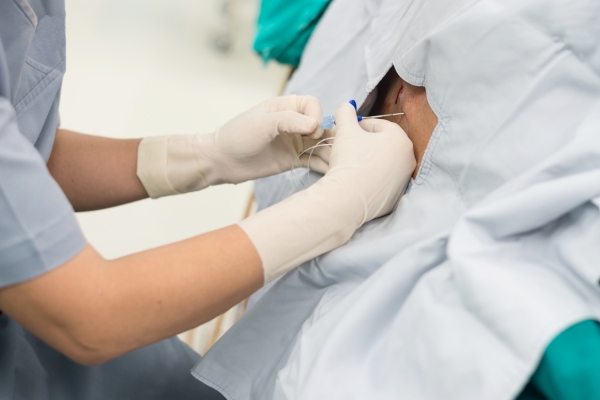Chronic joint pain and arthritis can affect every part of your life—from how you move and sleep to how you interact with others. At the Center for Regenerative Therapy & Pain Management, we offer non-surgical, image-guided treatments designed to reduce inflammation, improve joint function, and help you return to doing the things you enjoy most.
Joint pain can result from a variety of issues, including inflammation, wear-and-tear, autoimmune disorders, or previous injury. Arthritis is a specific category of joint pain that involves inflammation inside the joint and can progressively damage cartilage and surrounding tissues.
The most common types are osteoarthritis—caused by aging and repetitive motion—and rheumatoid arthritis, where the immune system attacks healthy joint tissue. Knees, hips, shoulders, and hands are often the most affected areas, leading to stiffness, swelling, and difficulty with daily activities like walking or gripping objects.

Age-related cartilage breakdown that causes stiffness, swelling, and reduced motion.
Inflammation of soft tissues around the joint may mimic arthritis symptoms.
Repetitive strain or past trauma can lead to long-term joint degeneration or instability.
An autoimmune condition that causes joint inflammation, pain, and eventual damage.
Ongoing joint discomfort following surgery due to scar tissue or incomplete healing.
Crystal buildup in joints that causes sudden, severe joint pain and swelling.

Symptoms vary but often worsen with movement or activity. Proper diagnosis helps distinguish arthritis from other causes of joint pain.
Aching, throbbing, or burning joint pain
Stiffness, especially in the morning or after rest
Swelling and tenderness around the joint
Decreased range of motion
Joint instability or weakness
Redness or warmth in the affected area
Diagnosing joint pain and arthritis begins with a thorough evaluation of your medical history, symptoms, and physical function. We assess joint mobility and strength, conduct blood tests to check for inflammation or autoimmune conditions, and may order imaging such as X-rays, MRI, or ultrasound to evaluate joint structure. In some cases, diagnostic injections are used to help pinpoint the exact source of your pain and guide treatment planning.
Deliver corticosteroids directly into the joint to quickly reduce inflammation, relieve pain, and restore movement in targeted areas.
Provide cushioning and lubrication inside joints—particularly the knees—to ease pain and improve shock absorption.
Temporarily interrupt nerve signals from the painful joint area, helping both with pain relief and diagnostic accuracy.
Uses precisely targeted heat to deactivate overactive nerve fibers responsible for chronic joint pain.
Relieve tight or irritated muscles around the joint that may be contributing to pain, stiffness, or restricted motion.
Enhance strength, stability, and flexibility around affected joints to support long-term recovery and prevent flare-ups.

We provide advanced, personalized pain management care for patients across New Jersey, led by board-certified specialist Dr. Shane Huch.
Center for Regenerative Therapy and Pain Management © All Rights Reserved | A Division of Toms River Anesthesia Associates